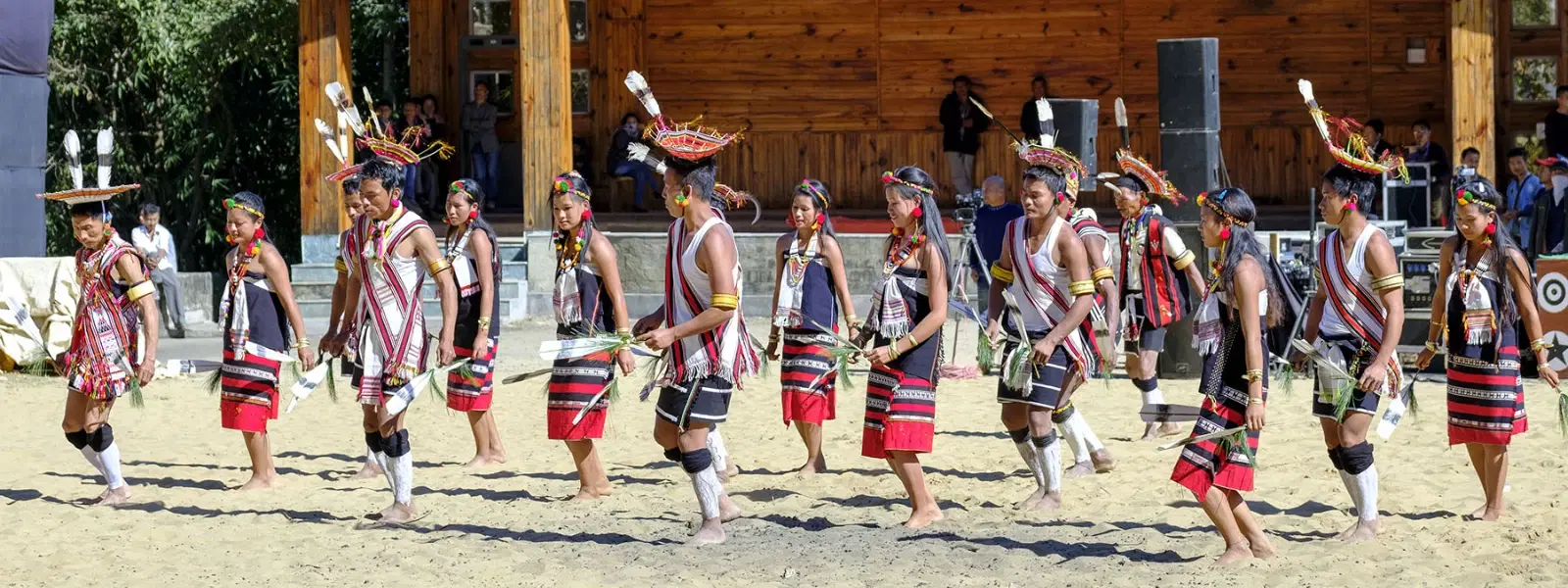
Hotels
•03 min read

Imagine a celebration that blends vibrant dance, traditional attire, and heartfelt gratitude—this is the essence of Shad Suk Mynsiem, a festival that embodies the soul of the Khasi community in Meghalaya. Shad Suk Mynsiem, meaning "Dance of the Happy Hearts," is a spring festival observed by the Khasi tribe as a thanksgiving for the blessings of the past year. In the following discussion, you will gain a deeper understanding of the Shad Suk Mynsiem dance and learn about its significance, rituals, and the rich heritage it represents.
The term Shad Suk Mynsiem translates to "Dance of the Happy Hearts." This vibrant festival is not only a display of art and movement but also a profound expression of gratitude. It serves as a thanksgiving celebration where the Khasi tribe comes together to honor the nature, their forebearers, and the abundance bestowed upon them over the past year. The dance itself is a colorful expression of communal joy and unity.
Originating from the rich indigenous faith known as Niam Khasi, the Shad Suk Mynsiem festival is steeped in ancient traditions. It reflects the agrarian lifestyle of the Khasi people, who have long depended on the bounties of nature, along with a distinct matrilineal system that plays a significant role in their societal structure. This historical background is a testament to the deep connection between the Khasi community and their natural environment, preserving centuries-old cultural practices.
One of the highlights of the Shad Suk Mynsiem festival is the series of ceremonial dances performed at the traditional Weiking Ground. These dances are meticulously choreographed and are a key feature of the celebration. The Seng Khasi organization is instrumental in preserving these traditions, ensuring that each ritual is performed with the utmost respect and adherence to ancient customs.
The festival is a community event where both Khasi men and women take center stage. Male dancers are typically seen as symbols of strength, while the female participants embody purity and grace. Each performance is a representation of the intricate balance between these elements, integral to the cultural fabric of the Khasi community.

The Shad Suk Mynsiem festival is also a visual treat thanks to the traditional attire worn by the dancers. The costumes often feature intricate designs that highlight various aspects of Khasi traditional dance and integrity, such as vibrant colors and detailed patterns. Musical instruments like drums and flutes further elevate the atmosphere, weaving a symphony that has been passed down through generations, and adding depth to the cultural expression of this Meghalaya folk dance.
At its core, Shad Suk Mynsiem reflects the enduring values of gratitude, community, and a deep connection to nature. It holds a mirror to the Khasi cultural practices that have been cherished over centuries. Each step and turn in the dance preserves a narrative of the Khasi tribe rituals, ensuring that the cultural heritage of Meghalaya is not lost over time.
Celebrated in the heart of spring, this festival marks the inception of a new agricultural cycle. The festival ushers in a period of renewal and growth, symbolizing hope and the fertile energy that the season brings. It is a time when nature renews itself and the community gathers to celebrate life and the impending abundance.
Did You Know? The Shad Suk Mynsiem dance is not just a celebration but also a way for the Khasi community to honor their ancestors and seek blessings for the future. This unique tradition has been passed down for generations, ensuring the preservation of Meghalaya’s cultural heritage.

Ka Shad Suk Mynsiem is known as the "Dance of the Happy Hearts," symbolizing gratitude and joy.
The Khasi dance of Meghalaya refers to Shad Suk Mynsiem, a traditional folk dance performed during the spring festival.
Participants include Khasi men and women, with men representing strength and women symbolizing purity in the dance.
Shad Suk Mynsiem is typically celebrated in April, marking the arrival of spring and the beginning of a new agricultural season.
The attire reflects the cultural identity of the Khasi tribe, with intricate designs and symbolic elements representing purity and strength.
Shad Suk Mynsiem is more than just a dance; it is a celebration of gratitude, renewal, and the rich cultural heritage of the Khasi community in Meghalaya. Through its vibrant rituals, traditional attire, and symbolic dances, the festival serves as a reminder of the importance of preserving indigenous traditions. Exploring this festival allows us to appreciate not only ceremonial artistry but also the deep, soulful connection the Khasi people maintain with nature and their roots.